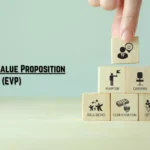We often remain confused about understanding both the terms ‘Talent Acquisition’ and Recruiting. We believe they are synonyms of each other. However, they are not. This blog will help you a lot. In this blog, we are going to share the meaning of both terms, their usage and their purpose in recruiting agencies and other organizations.
Understanding Talent Acquisition
Talent acquisition is an approach that ensures proper analyzing, identifying, assessing and acquiring qualified candidates for a particular position in a company. Unlike general recruitment, talent acquisition focuses on quality over quantity. Despite of thinking filling up the post vacancy randomly, it verifies whether the candidate is skillful; enough for the position or not.
We can say that using the right talent acquisition practices may not fill mass vacancies, but we will surely get candidates who have the right skill set and relevant knowledge. They can also help the company thrive and grow.
What is Recruitment?
In general terms, the process of hiring employees is known as recruitment, where employers find, screen, hire, and onboard qualified job candidates for relevant vacancies. The main motto of selection can be quantity enhancement and vacancy fulfilment rather than quality candidate hiring.
A recruiter ensures filling an open role by recruiting candidates and informing the talent acquisition managers whether the candidates are suitable for the position or not.
Also Read:
Difference Between Recruiting and Talent Acquisition Process
The entire hiring is a long and challenging process. From the steps like JD creation, recruiter research and analysis, peruse notification, resume validation, then-candidate sourcing, screening to conducting interviews and onboarding HRs have to follow the entire process till the final onboarding.
Now the query appears what are the recruiters’ and talent acquisitions’ tasks throughout the whole process? Here in this section, we are talking about the distinction between talent acquisition and recruitment processes. Here are a few elements following on which we can bifurcate;
1. Strategy and Planning
Recruitment is a process that follows customary rules and regulations. You can say that recruitment ensures the process followed by the HR handbook. Talent acquisition involves proactive planning, forecasting, and aligning hiring practices with overall organizational goals.
It thinks about building talent pipeline, enhance employer branding, developing relationship with potential candidates, and integrating their excellence in enhaning productivity. Through the strategy, organization ensures the acquisition of top-tier talent that not only meets current demands but also contributes to the organization’s sustained growth and success.
2. Understanding Workforce
In recruitment management, the hiring process remains the same for every candidate. In this case, recruiters don’t think about hiring with the required expertise.
In case of talent management recruiters understand the job profile and requirements first, then analyse the company’s internal operation, skillset, and experience, and at the end, they can proceed with employee hiring.
3. Performing Analysis
However, recruitment and talent acquisition are not similar but recruitment can be a subprocess of the talent acquisition process. For the right recruiting employers often gather candidate information, research and analyse it, if required.
On the other hand, the talent acquisition process is a thorough process that includes every minute step starting from JD creation to candidate onboarding.
The talent acquisition process would be incomplete without a talent acquisition strategy like implementing metrics of candidate analysis and ensuring quality hires.
4. Employer Branding
The main motto of recruitment is hiring candidates and filling the vacancies for the company. In the recruitment process, they may skip the branding process.
Organizations engage in talent acquisition for seeing them in better position in market. So in this case they have to look out for company branding to attract and retain high-caliber professionals, ensuring a sustained competitive advantage in the dynamic job market.
5. Talent Management
At the time of recruitment, however, employers think about talent management, but they focus more on quantity hiring than that of hiring quality candidates.
In the case of talent acquisition, employers’ main aim is hiring eligible candidates for the particular friend. Even, at the time of searching talent, if recruiters don’t get any specialists, they wait for the right candidate rather than selecting any random ones.
6. Time management
Recruitment focuses on quick filling of vacant position. It ensures the mass recruitment rather than wait for the releavnt candidates. The entire process consumes less time than that of the talent acquisition process.
On the other hand, talent acquisition involves proper strategies bringing top-notch candidates rather than focusing mass recruitment. Along with recruiting candidates the process focuses on overall employer branding and company enhancement. So often, organizations even wait long acquiring talented candidates for their company.
How Does the Talent Acquisition Process Work?
Talent acquisition is an in-detailed recruitment process that includes understating requirement types, searching for suitable candidates for the position, attracting and evaluating them, and hiring and onboarding accordingly. However, the process can vary among organizations, it includes the basic stages likewise;
➔ Identifying Job Requirements
Identifying the job requirements can be the first step in the talent acquisition process. This process begins with a clear understanding of the position requirements.
It ensures knowing and analysing the job roles, searching for suitable candidates, and setting the expectations and qualifications required for the position.
➔ Job Posting
The organizations advertise job posts through numerous job-related platforms and social media channels like LinkedIn, Twitter, Facebook and other professional networks. The job description should be relevant and appealing to attract potential candidates.
➔ Sourcing Candidates
After posting a vacancy post, recruiters start searching for potential candidates through the talent acquisition process. The process includes reviewing the candidates’ profiles, who have submitted resumes, leveraging professional networks, and using recruitment platforms and other social media to identify them. Through the process, employers try to understand whether the candidates are suitable for the position.
➔ Screening Resumes
After resourcing candidates is done properly, employers focus on screening resumes and mailing the selected candidates for the interview process.
In this step, They shortlist candidates on the basis of meeting the basic qualifications for that position. Screening Resumes helps to manage the volume of applicants and focus on those who are the best fit.
➔ Initial Contact
When the resumes are shortlisted for the further steps, an interview letter is sent to them. In this step, employers provide additional information like candidate roles, company culture and other preliminary information about the workplace to the candidates. During the process, employers make initial contact with the candidates and wait for a positive response.
➔ Arranging Interviews
When employees forward the initial contact and get positive responses from candidates, they send those candidates an invitation mail for the interview. In this process, candidates have to attend one or multiple rounds of interviews with managers, HRs, hiring managers, etc.
During the process, employers try to understand their expertise in technical skills, cultural fit, and other relevant attributes. The entire interview process may be completed in one day or can be extended to two to three days.
➔ Assessment and Testing
It is the first step of the interview process. In some organizations, employers take assessments, other skill tests and other evaluation methods testing to check a candidate’s ability in a particular field. Before arranging face-to-face interviews, this process helps the organization eliminate unsuitable candidates.
➔ Face-to-face round
After the assessment round is over, selected candidates get another invitation letter over the mail for the face-to-face and HR rounds accordingly. In some organizations, the entire interview process is scheduled on the same day, where after being selected from the assessment round, candidates get a call from the interviewer for the next round.
In a face-to-face round, the interviewer asks relevant queries about allocating tasks to the candidates. Questions should be relevant to their job role.
During this round, the talent acquisition specialists understand whether the candidates are suitable for the notified job role. If the candidates are selected, employers perform the reference check process for the candidates’ credibility.
➔ Reference Checks
Throughout the entire process, a reference check is one of the main things that employers also perform. In the process, after selecting the candidate, employers first contact their previous employers or references to verify their qualifications, work history, and performance before offering the job.
➔ Job Offer
After performing the entire process thoroughly, employers get candidates suitable for the relevant position. Those candidates get job offer letters via mail.
The job offer letter includes the position title, start date, compensation structure (Salary, bonuses, and benefits), work hours, and other relevant policies or conditions. Often organizations mention the probationary periods, reporting structure, background checks or required documentation.
➔ Feedback and Continuous Improvement
The last task in this process is providing feedback for continuous improvement of employees. After the recruitment process, organizations often seek feedback from both successful hires and those who were not selected.
This is helpful for both the employees and employers It helps improve future talent acquisition strategies for the company, on the other hand, employees feel stress-free and happy for the smooth onboarding process.
➔ Onboarding
If the candidates accept the offer, the organizations start the onboarding process. This process involves an orientation program detailing the mission, vision and culture of the company and other necessary paperwork and documentation for employment.
During the onboarding, employers discuss the training programs and resources, information on workplace policies and other essential logistical details with the selected candidates. With the process, new employees feel welcomed, informed, and equipped to contribute to the organization’s success.
Also Read:
Tips for an Effective Talent Acquisition Process
Some quick tips help employers in planning and strategizing it. Let’s see the following ways to improve.
- Clearly define the job description, such as the skills, qualifications, and other required expertise for the position. So that the candidates understand the job requirement.
- Understand the target audience first and post as per the understanding. Social media vacancy post should be engaging and accurate. Employers should mention the unique aspects of the role and the organization to attract top talent.
- Try bearden candidate pool by reaching numerous channels like different job platforms, social media, professional referrals and other media.
- Perform accurate background checks and resume reviews focusing on key qualifications.
- Conduct a thorough interview process or a set of interview processes by ensuring technical excellence, cultural fit, communication abilities, etc.
- Craft competitive job offers in terms of compensation, benefits, and other relevant factors to attract and retain top talent. So that employees do not have to back out after selection.
- Arrange a Quick and smooth onboarding process so the employees don’t have to wait long.
Introducing Talent Acquisition Software
Talent acquisition software, also known as applicant tracking systems (ATS) or recruiting software, is the same type of technology-designed tool streamlining the recruitment and hiring process. With the use of talent acquisition software, employers don’t need to hire specialists for the position.
With the help of the tools, HR can manage the entire talent acquisition lifecycle, from posting job openings to onboarding new hires. This software is also very helpful for bulk hiring, and internal recruiting, as well.
Talent Acquisition Trends in 2024
The process of recruiting has come a long way since the day of printing out vacancy posts on newspapers or flyers. In recent practices, organizations research a lot before introducing any hiring process.
Adapting the modern talent acquisition process helps the organization to attract, engage and retain top talent, ensuring company growth and productivity in a competitive market.
Along with this, the use of AI and other automation processes is trending in talent acquisition for 2024 and beyond. It also includes remote work facilities, introducing a permanent gig economy, global talent sourcing, cloud-based decision-making, emphasis on diversity and inclusion, and more.










